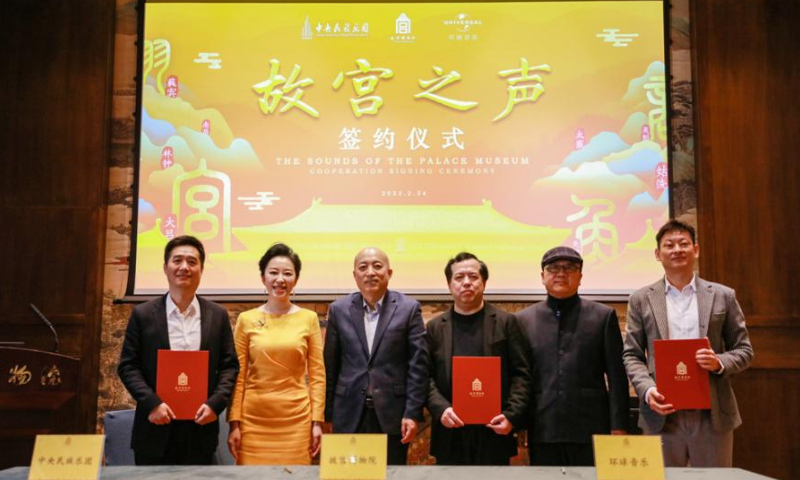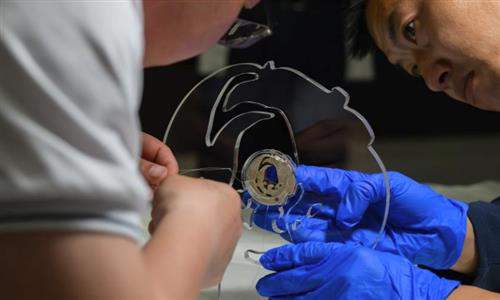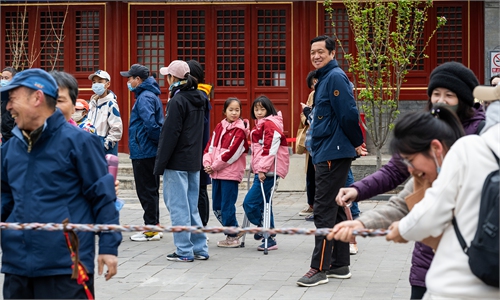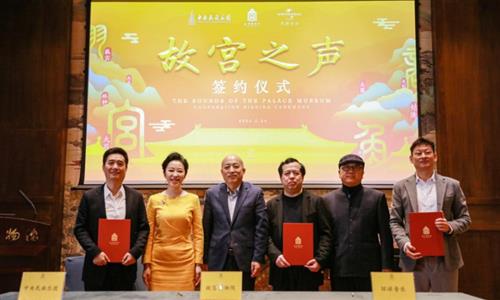ARTS / MUSIC
The Palace Museum launches new art program; audio recording work officially commenced

Photo: people.com.cn
China's prestigious cultural institution, the Palace Museum, has recently launched a new art program called Sound of Palace Museum. Chinese-American musician Tan Dun is the first stellar guest to the program.
Tan's collaboration with the museum recently commenced when the artist visited the site to record the sound of the museum's precious golden chimes.
The golden chimes date back to the Qianlong period of China's Qing Dynasty (1644-1911). The whole instrumental set consists of 16 chime bells, each of which was gilded with gold.
Cultural relic expert Jia Zhengyu told the Global Times that chimes such as these were often used as major ritual instruments for court musicians in ancient times. During the Qing Dynasty, the instrument was commonly played during sacrificial ceremonies at temples and altars.
"The sizes, thickness and materials of the chime bells allow them to play various musical notes," Jia told the Global Times.
The sound of the ancient instrument inspired Tan Dun. He said that for him, the ringing sound of chimes is the representative sound of the Palace Museum. The instrument's sound "carries a long historical memory of the nation and also China's profound cultural connotations."
Tan also revealed that his music project will take the sound of golden chimes as a "starting point," and then incorporate other sounds he collects along the Beijing Central Axis to complete a whole music piece.
"The sound of chimes that extends from the Palace Museum along the Beijing Central Axis also symbolizes an 'axis' of time and civilization in China's traditional culture," Tan remarked.
Tan is an internationally acclaimed musician who has long been considered a pioneer in contemporary classical music. He is known for fusing Western and Chinese musical elements together.
Liang Bingfu, a Shanghai-based fellow music composer, told the Global Times that Tan's music pieces often feature "very Chinese" instruments like sheng, a Chinese mouth-blown polyphonic free reed instrument, and pipa, a plucked instrument.
"We often experience Chinese philosophical aesthetics such as the dynamics between human and nature and also Asia's solitude and euphemistic approaches to the world. Those abstract feelings are what we call the yijing in Chinese art," Liang told the Global Times.
Including Tan's project, the program The Sound of the Palace Museum consists of 12 separated musical pieces, all dedicated to showing the consistency and beauty of Chinese civilization through the lens of art.
Zhao Cong, the chief planner and art director of the project, said that the project went through a two-year incubation period. Apart from Tan, it also engages other notable music figures like Ye Xiaogang, Guan Dazhou and Zhao Ling. Taking Zhao as an example, he has been a music guide collaborating with film directors like Zhang Yimou, Chen Kaige and Feng Xiaogang.
"Taking 12 sounds related to the Palace Museum, these music pieces will aim to show a historical depth and sense of innovation," Zhao said. She also added that a series of micro-documentaries will also be made to document the artists' creative journeys. Zhao, a pipa veteran, is also the head of the China National Traditional Orchestra.
The Sound of the Palace Museum was co-launched by the museum, the China National Traditional Orchestra and Universal Music China.
Du Haijiang, the deputy director of The Palace Museum, said that it is hoped that the "rich cultural resources and academic achievements" of the museum can be transformed into music works with Chinese characteristics, Chinese style and Chinese spirit.
"It is hoped that these works can deliver people spiritual and cultural contentment while promoting Chinese civilization to the world," Du emphasized.



